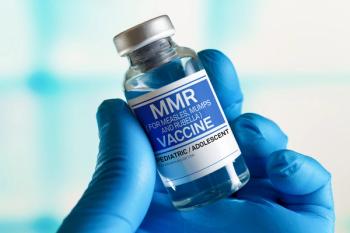
Patient Population with Cancer History Expected to Increase to 22.1 Million by 2030
There are currently an estimated 8.1 million males and 8.8 million females in the United States with a history of cancer.
The population of Americans with a history of cancer is projected to increase to approximately 22.1 million by 2030 based on the growth and aging of the population alone, increasing from approximately 16.9 million in 2019. These estimates are derived from a new report from Cancer Treatment and Survivorship Statistics, 2019, which is produced every 3 years by the American Cancer Society in collaboration with the National Cancer Institute.
The report, which appears in CA: A Cancer Journal for Clinicians, indicates that the number of patients with a history of cancer continues to increase in the United States, despite stable incidence rates in women and declining rates in men. The growth was attributed to an aging patient population as well as increases in cancer survival due to advances in treatment and early detection.
According to the report, there are currently 8.1 million males and 8.8 million females in the United States with a history of cancer. Approximately 2 out of 3 patients with a history of cancer (68%) were diagnosed 5 or more years ago and nearly 1 in 5 (18%) was diagnosed 20 or more years ago. Nearly two-thirds (64%) are aged 65 years or older. In addition, the report estimates that there are 65,850 Americans with a history of cancer aged 14 years and under and 47,760 between 15 and 19 years.
The 3 most prevalent cancers among men in 2019 are prostate (approximately 3.7 million), colon and rectum (776,120), and melanoma of the skin (684,470). For women, the prevalent cancers are breast (approximately 3.9 million), endometrium (uterine corpus) (807,860), and colon and rectum (768,650). The authors noted that cancer prevalence figures differ from those for cancer incidence due to occurrence, survival, and median age of diagnosis.
The estimated 22.1 million Americans to have a history of cancer by 2030 is based on population projections from the United States Census Bureau, using current incidence, mortality, and survival rates.
The authors noted that long-term physical effects of treatment, as well as psychological and socioeconomic sequelae, can directly affect patients. Challenges also remain for patients and their caregivers with regard to navigating the health care system, including poor integration of survivorship care between oncology and primary care settings, as well as financial and other barriers to quality care, particularly among the medically underserved.
Identification of the best practices for delivering quality rehabilitation and posttreatment is needed, the authors concluded.
Reference
Cancer Survivors Predicted to Number over 22 Million in U.S. by 2030 [press release]. American Cancer Society website. Published June 11, 2019.
Newsletter
Stay informed on drug updates, treatment guidelines, and pharmacy practice trends—subscribe to Pharmacy Times for weekly clinical insights.














































































































































































































